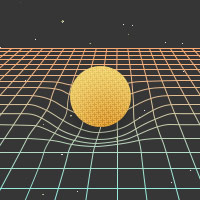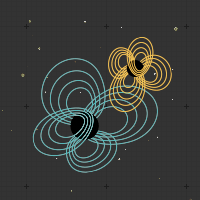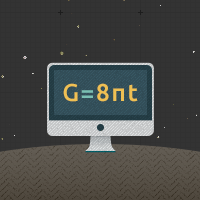A Totally New Kind of Astronomy
A Different Perspective on the Universe
In the rich, velvety darkness of prehistoric night, humans no doubt gazed up at the starry sky in awe at its sublime beauty and mystery. Simple human nature led them to wonder why such gorgeous lights appeared above, and moved as they did. As cultures developed, complex mythological systems were created in an imaginative effort to explain the existence and movements of those heavenly bodies. Burgeoning civilizations created the need for accurate time keeping. Ancient people turned to the sky to fill that need. Gradually, science began to come into the picture. Imagination and fables gave way to investigation and facts, bringing ever more marvelous wonders, and new mystery.
When Galileo Galilei first turned a primitive telescope to the sky in 1609 he saw things no human had ever seen before, like the four largest moons of Jupiter. Modern astronomers have developed new types of telescopes that detect all sorts of electromagnetic waves — gamma rays, X-Rays, ultraviolet, infrared, microwaves, and radio, as well as visible light. They've even developed instruments that allow them to watch as other types of particles — such as cosmic rays and neutrinos — stream toward us from the most distant reaches of the cosmos.
Using these techniques, astronomers have discovered that our Universe is 80 billion trillion miles across, with hundreds of billions of galaxies, and hundreds of billions of stars like our own Sun in each of those galaxies. Before modern astronomy, the height of human knowledge of the Universe claimed that the Earth was flat, and the Sun carried across the nearby shell of the sky on a golden chariot. Now, we know the breathtaking extent of the Cosmos, and have a far more sophisticated understanding of its astounding processes.
The development of astronomy has led an expansion of human knowledge reaching out, ever farther from our home. Yet this growth in our understanding is limited by our tools. The limits are familiar to us. Light cannot be used to see through objects. Although certain “colors” can penetrate objects better than others — like X-Rays through our bodies — there is always a limit. Light can always be absorbed, which means that certain things will always be hidden to us if we only use light. Some of the most interesting events in the Universe lie hidden behind an impenetrable veil of dust and other scattered light. In fact, for the first million years after the Big Bang, all of the matter in the Universe was so hot it glowed, and light could barely travel anywhere. If astronomers want to see the Universe much before this time, they can't use any type of telescope used before.
Gravitational-wave detectors fit the bill nicely. Unlike light, gravitational waves are not stopped by dust — or even stars and planets. In fact, when two neutron stars collide, a standard telescope would only see what happens on the surfaces of the stars or above. A gravitational-wave detector, on the other hand, would be able to peer into the very center of the collision — where the most mysterious events are happening. Of course, detecting gravitational waves is enormously challenging, and will require an extraordinary triumph of science and engineering. Fortunately, that triumph is at hand.






